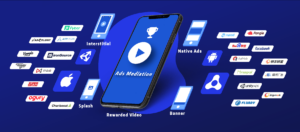Understanding Interstitial Advertising: A Comprehensive Guide
Interstitial advertising has become a prevalent strategy inside digital marketing landscape, offering unique benefits and challenges. These full-screen ads appear at natural transition points in the app or website, capturing the consumer’s full attention. This article explores what interstitial advertising is, its advantages and drawbacks, guidelines, and the way to implement it effectively.What is Interstitial Advertising?
Interstitial advertising identifies full-screen ads that cover the interface of the host app or website. These ads appear at natural transition points, such as between activities or during a pause in content consumption, and frequently include rich media elements like images, videos, or animations. Users have the option with the idea to click on the ad to have interaction with it or close it to revisit their previous activity.

Advantages of Interstitial Advertising
High Visibility:
Because interstitial ads occupy your entire screen, they may be almost impossible for users to ignore. This high visibility can cause higher engagement rates in comparison with smaller, less intrusive ad formats.
Enhanced Engagement:
The immersive nature of interstitial ads, often incorporating rich media elements, can capture user attention and encourage interaction. This can cause better brand recall and higher conversion rates.
Effective Timing:
By appearing at natural transition points, interstitial ads might be less disruptive towards the user experience. This can improve user perception from the ad reducing ad fatigue.
Versatility:
Interstitial ads can support various formats, including static images, videos, animations, and interactive elements. This versatility allows marketers to produce more engaging and artistic ad experiences.
Disadvantages of Interstitial Advertising
Potential Intrusiveness:
If not implemented carefully, interstitial ads can disrupt the user experience and bring about frustration. This can cause negative perceptions of the brand and decreased user engagement.
Higher Bounce Rates:
Poorly timed or overly frequent interstitial ads could cause users to go out of the app or website. This can result in higher bounce rates and negatively impact user retention.
Development Costs:
Creating high-quality interstitial ads with rich media elements could be more resource-intensive in comparison with other ad formats. This can result in higher development costs and longer production times.
Best Practices for Interstitial Advertising
Strategic Placement:
Place interstitial ads at natural transition points, such as between levels in a game, during content loading, or after having a user completes a job. This reduces the likelihood of disrupting the user experience.
Frequency Control:
Avoid bombarding users with a lot of interstitial ads in a short period. Implement frequency capping to limit frequent a user sees a commercial within a given timeframe.
Clear and Concise Messaging:
Ensure that this ad content articles are clear, concise, and relevant for the user. Avoid overwhelming users with a lot of information or overly complex interactions.
Fast Loading Times:
Optimize ad assets to make certain fast loading times. Slow-loading ads can frustrate users and result in higher bounce rates.
Provide a Clear Exit Option:
Always provide users having a clear and easily accessible option to close the ad. This helps keep a positive buyer experience and cuts down on likelihood of frustration.
Test and Optimize:
Continuously test different ad creatives, placements, and frequencies to distinguish what works perfect for your audience. Use analytics to measure performance making data-driven optimizations.
Implementing Interstitial Advertising
Choose the Right Platform:
Select an advert network or platform that supports interstitial advertising, like Google AdMob, Facebook Audience Network, or AppLovin.
Create Engaging Ad Creatives:
Develop high-quality ad creatives that capture user attention and encourage interaction. Consider using professional designers and multimedia elements to boost the ad experience.
Integrate with Your App or Website:
Work with developers to seamlessly integrate interstitial ads into your app or website. Ensure the ads appear at appropriate transition points and never disrupt the consumer experience.
Monitor Performance:
Use analytics tools to monitor the performance of one's interstitial ads. Track metrics for example click-through rates, conversions, and user engagement to judge effectiveness.
Adjust Based on Feedback:
Pay attention to user feedback and adjust your interstitial ad strategy accordingly. If users express frustration or negative sentiment, reconsider ad placements, frequency, or creative content.
Conclusion
Interstitial advertising may be a powerful tool for capturing user attention and driving engagement. By understanding the benefits and drawbacks, following guidelines, and carefully implementing and optimizing your interstitial ad strategy, it is possible to effectively leverage this ad format to realize your marketing goals. Whether you try and boost brand awareness, drive conversions, or enhance user engagement, interstitial ads provide a versatile and impactful solution inside digital advertising landscape.